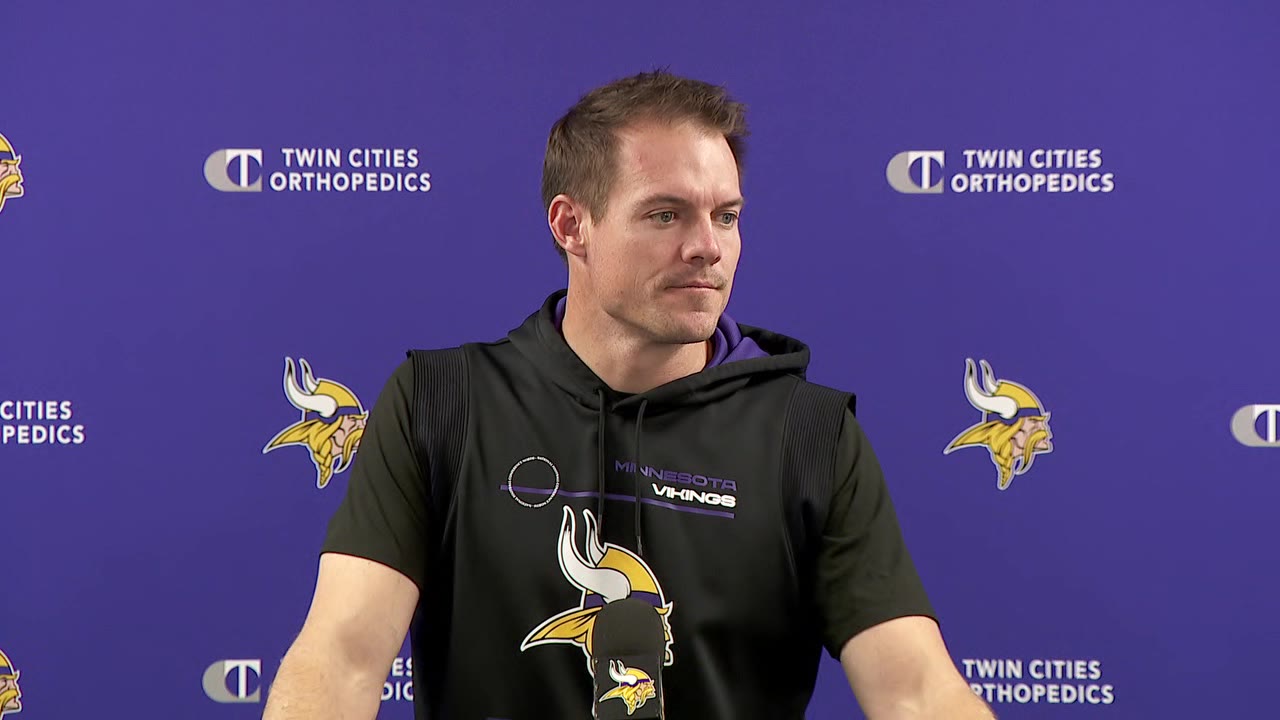
Minnesota Vikings wide receiver K.J. Osborn, a former fifth-round pick, has seen significant improvement in his performance since his rookie year. Despite not catching a pass in his debut season, Osborn has showcased consistent growth, averaging 615 receiving yards and scoring 15 touchdowns over the past three seasons.
As Osborn approaches free agency in March, his impressive stats and the Vikings’ other roster needs make it likely that he will receive offers that could be too expensive for the team to match. Pro Football Focus (PFF) identifies the Cleveland Browns and Baltimore Ravens as potential landing spots for Osborn.
PFF’s cap expert, Brad Spielberger, notes Osborn’s versatility in playing both in the slot and on the outside, describing him as a WR3/4 who has thrived in the Vikings’ high-volume passing attack. Despite some drops in 2023, Osborn could offer valuable depth for many teams. Spielberger suggests that with the addition of first-round rookie Jordan Addison and the emergence of Brandon Powell, the Vikings might face challenges retaining Powell on a more budget-friendly deal.
Spotrac predicts Osborn to command a two-year contract worth $15.13 million, averaging $7.56 million per year in free agency. This projection might exceed the Vikings’ budget for a fourth option in their passing game, making Osborn’s departure from the team more likely.
Writing Was on the Wall for Osborn After Vikings Drafted Jordan Addison
During the previous offseason, K.J. Osborn played a crucial role in the Minnesota Vikings’ decision to move on from veteran Adam Thielen, who saw a reduced role in the offense following the arrival of T.J. Hockenson.

The designated successor for Thielen was Jordan Addison, chosen as the 23rd overall pick the previous year. Addison quickly made an impact in the current season and eventually claimed the role of the team’s No. 2 wide receiver, complementing Justin Jefferson.
Addison solidified his position in the offense, particularly when Jefferson was sidelined for seven games due to a hamstring injury. Finishing the season with impressive statistics, Addison ranked second on the team in targets (108), receptions (70), and receiving yards (911), following Hockenson. He also led the team with 10 receiving touchdowns, marking the most by a Vikings rookie since Randy Moss in 1998.
In contrast, Osborn concluded the season with 48 receptions on 75 targets, accumulating 540 yards receiving and three touchdowns. While Osborn remains a respected figure in the Vikings locker room and could potentially be welcomed back, it is anticipated that his return would be on a more modest deal compared to what he could secure with other teams.
Vikings’ Top Needs in 2024 NFL Draft
The Minnesota Vikings endured a disappointing 7-10 season in 2023, exacerbated by the absence of Kirk Cousins, who missed the final nine games due to a ruptured Achilles from which he is currently recovering. Merely sticking with Cousins for the upcoming season presents challenges, especially considering the team faces decisions on 15 other key contributors, and their cap space is limited.

Positions in need of significant improvement on the defensive front include edge rusher, interior defensive line, and cornerback. Acquiring an impact first-round pick could make a substantial difference in these areas. However, the preferred strategy to succeed Cousins involves drafting a first-round quarterback to undergo developmental growth in their inaugural year.
The recent Vikings regime has strategically approached a competitive rebuild by balancing continuity with budget-friendly free-agent additions over the past two years. The upcoming draft, coupled with further development of players from the 2022 and 2023 drafts during another offseason, will play a pivotal role in determining whether the roster is poised for competitiveness or should anticipate a step back.
Leave a Reply